Whirlpool WDT750SAKW Handleiding
Whirlpool
Vaatwasser
WDT750SAKW
Bekijk gratis de handleiding van Whirlpool WDT750SAKW (84 pagina’s), behorend tot de categorie Vaatwasser. Deze gids werd als nuttig beoordeeld door 11 mensen en kreeg gemiddeld 4.5 sterren uit 6 reviews. Heb je een vraag over Whirlpool WDT750SAKW of wil je andere gebruikers van dit product iets vragen? Stel een vraag
Pagina 1/84

OWNER’S MANUAL
MANUEL DE L’UTILISATEUR
MANUAL DEL PROPIETARIO
DISHWASHER MAINTENANCE 3 ......
DISHWASHER LOADING TIPS 4 ........
DISHWASHER CARE 5 .......................
DISHWASHER SETTING MENU 6 ......
ERROR CODES 7 ................................
Error codes / blinking lights 7 ..................
INSTALLATION REQUIREMENTS 8 ...
Tools and parts 8 .....................................
Location requirements 10 ........................
Product and cabinet opening
dimensions: 11 .........................................
Drain requirements 12 .............................
Water supply requirements 12 .................
Electrical requirements 12 .......................
INSTALLATION INSTRUCTIONS 13 ...
Prepare cabinet opening—
new utilities 13 .........................................
Install optional moisture barrier -
recommended for wood countertops ...13
Electrical connection 14 ..........................
Prepare dishwasher 15 ............................
Remove access panel and insulation ....15
Disconnect and remove drip tray
assembly 15 .............................................
Connect water line to ll valve 16 ............
Connect ll hose to ll valve 17 ...............
Drain hose connection 18 ........................
Power cord connection 18 .......................
Install door handle
(on some models) 20 ...............................
Place dishwasher in cabinet 20 ...............
Custom panel installation
(custom panel models only) 21 ................
Choose anchor attachment method 21 ...
Final installation check........................22
Secure dishwasher in cabinet
opening 23 ...............................................
Connect water line to house
shut-off valve 24 ......................................
Connect drain hose 24 ............................
Complete installation 26 ..........................
Check operation 27 .................................
Install access panels 27 ...........................
If dishwasher does not operate 28 ..........
ENTRETIEN DU
LAVE-VAISSELLE 30 ...........................
CONSEILS DE CHARGEMENT
DU LAVE-VAISSELLE 31 ....................
ENTRETIEN DU
LAVE-VAISSELLE 32 ...........................
MENU DE RÉGLAGE DU
LAVE-VAISSELLE: 33 .........................
CODES D’ANOMALIES 34 ..................
Codes d’anomalies/témoins
qui clignotent 34 ......................................
EXIGENCES D’INSTALLATION 35 .....
Outils et pièces 35 ...................................
Exigences d’emplacement 37 .................
Dimensions d’ouverture du produit
et de l’armoire: 38 ...................................
Exigences d’évacuation 39 ......................
Spécications de l’alimentation
en eau 39 .................................................
Spécicationsélectriques 39 ...................
INSTRUCTIONS D’INSTALLATION ...40
Préparation de l’ouverture
d’encastrement de l’armoire –
nouveaux raccordements de service ... 40
Installer la barrière anti-humidité
en option – recommandée pour
les comptoirs en bois 40 .........................
Raccordement électrique....................41
Préparation du lave-vaisselle 42 ..............
Retrait du panneau d’accès
et de l’isolation 42 ...................................
Débrancher et enlever le plateau
d’écoulement 42 ......................................
Branchement de l’arrivée d’eau
à la valve de distribution 43 .....................
Branchement du tuyau de remplissage
à la valve de distribution 44 .....................
Raccord du tuyau de vidange 45 .............
Branchement du cordon
d’alimentation 45 .....................................
Installer la poigne de porte
(sur certains modèles) 47 .........................
Placer le lave-vaisselle dans l’armoire ...47
Installation du panneau personnalisé
(modèles avec panneau personnalisé
seulement) 48 ..........................................
Choix de l’option de xation 48 ...............
Vérication nale de l’installation 49 ........
Fixation du lave-vaisselle dans
l’ouverture d’encastrement
de l’armoire 50 .........................................
Branchement de l’arrivée d’eau
au robinet d’arrêt de la maison 51 ...........
Raccordement du tuyau de vidange 51 ...
Terminer l’installation 53 ..........................
Contrôle du fonctionnement 54 ...............
Installation des panneaux d’accès 54 .....
Si le lave-vaisselle ne fonctionne pas ...55
MANTENIMIENTO DE
LA LAVAVAJILLAS 57 .........................
CONSEJOS PARA CARGAR
LA LAVAVAJILLAS 58 .........................
CUIDADO DE LA LAVAVAJILLAS ... 59
MENÚ DE AJUSTES DE
LA LAVAVAJILLAS: 60 ........................
CÓDIGOS DE ERROR 61 ....................
Códigos de error / Luces
parpadeantes 61 ......................................
REQUISITOS DE INSTALACIÓN 62 ...
Herramientas y piezas 62 ........................
Requisitos de ubicación 64 .....................
Dimensiones del producto
y de la abertura del gabinete: 65 .............
Requisitos de desagüe 66 .......................
Requisitos de suministro de agua 66 ......
Requisitos eléctricos...........................66
INSTRUCCIONES
DE INSTALACIÓN 67 ..........................
Preparación de la abertura del
gabinete: instalaciones nuevas 67 ...........
Instalación opcional de la barrera
contra la humedad (recomendado
para los mostradores de madera) 67 .......
Conexión eléctrica 68 ..............................
Prepare la lavavajillas 69 ..........................
Retire el panel de acceso
y el aislante 69 ........................................
Desconecte y retire el ensamblaje
de la bandeja de goteo 69 .......................
Conecte la tubería de agua
a la válvula de llenado.........................70
Conecte la manguera de llenado
a la válvula de llenado.........................71
Conexiones de la manguera
de desagüe 72 .........................................
Conexión del cable de alimentación 72 ...
Instale la manija de la puerta
(en algunos modelos) 74 ..........................
Coloque la lavavajillas en el gabinete 74 .
Instalación del panel a la medida
(en modelos con paneles a la medida
solamente) 75 ..........................................
Selección del método de sujeción
de anclaje 75 ............................................
Vericación nal de la instalación 76 .......
Asegure la lavavajillas en la abertura
del gabinete 77 ........................................
Conexión de tubería de agua a
manguera de válvula de cierre
del hogar 78 .............................................
Conecte la manguera de desagüe 78 ......
Complete la instalación 80 ......................
Verique el funcionamiento 81 .................
Instale los paneles de acceso 81 .............
Si la lavavajillas no funciona 82 ...............
TABLE OF CONTENTS/TABLE DES MATIÈRES/ÍNDICE
W11323304B

2
SAVE THESE INSTRUCTIONS
IMPORTANT SAFETY INSTRUCTIONS
WARN G:IN When using the dishwasher, follow basic precautions, including the following:
Read all instructions before using the dishwasher.
Use the dishwasher only for its intended function.
Use only detergents or rinse agents recommended for use in a
dishwasher, and keep them out of the reach of children.
When loading items to be washed:
1) Locate sharp items so that they are not likely to damage the
door seal; and
2) Load sharp knives with the handles up to reduce the risk of
cut-type injuries.
Do not wash plastic items unless they are marked “dishwasher
safe” or the equivalent. For plastic items not so marked, check
the manufacturer's recommendations.
Do not touch the heating element during or immediately after use.
Do not operate the dishwasher unless all enclosure panels are
Do not leave the dishwasher open when not loading or unloading
dishes.
properly in place.
Do not tamper with controls.
Do not abuse, sit on, or stand on the door, lid, or dish racks of
the dishwasher.
To reduce the risk of injury, do not allow children to play in or
on the dishwasher.
Under certain conditions, hydrogen gas may be produced in a
hot water system that has not been used for two weeks or
more. HYDROGEN GAS IS EXPLOSIVE. If the hot water system
has not been used for such a period, before using the
dishwasher turn on all hot water faucets and let the water flow
from each for several minutes. This will release any
accumulated hydrogen gas. As the gas is flammable, do not
smoke or use an open flame during this time.
Remove the door or lid to the washing compartment
when removing an old dishwasher from service or
discarding it.
Do not use replacement parts that have not been recommended
by the manufacturer (e.g. parts made at home using a 3D printer).
GROUNDING INSTRUCTIONS
SAVE THESE INSTRUCTIONS
■ For a grounded, cord-connected dishwasher:
The dishwasher must be grounded. In the event of a
malfunction or breakdown, grounding will reduce the risk of
electric shock by providing a path of least resistance for
electric current. The dishwasher is equipped with a cord
having an equipment-grounding conductor and a grounding
plug. The plug must be plugged into an appropriate outlet
that is installed and grounded in accordance with all local
codes and ordinances.
WARN G:IN Improper connection of the equipment-
grounding conductor can result in a risk of electric shock.
Check with a qualified electrician or service representative if
you are in doubt whether the dishwasher is properly
grounded. Do not modify the plug provided with the
dishwasher; if it will not fit the outlet, have a proper outlet
installed by a qualified electrician.
■
For a permanently connected dishwasher:
The dishwasher must be connected to a grounded metal,
permanent wiring system, or an equipment-grounding
conductor must be run with the circuit conductors and
connected to the equipment-grounding terminal or lead on
the dishwasher.

3
DISHWASHER MAINTENANCE
Detergents
High-quality premeasured tablets and packs are recommended
for improved performance.
Quality tablets and packs have been proven better than powder,
liquid, or gel detergents at reducing lming on dishes. Using
tablets and packs over time will start to reduce or eliminate white
lm. They are suitable for all water hardness and soil levels. Also,
by using a rinse aid, you can minimize repeat buildup of white
lm (not all packs and tablets contain rinse aid). Always place
premeasured detergents in main compartment and close lid.
NOTE: Follow instructions on the package when using other
dishwasher detergent types.
■Use automatic dishwasher detergent only. Add detergent just
before starting a cycle.
■Fresh automatic dishwasher detergent results in better
cleaning. Store tightly closed detergent container in a cool, dry
place.
■Extremely hard water mineral deposits (15 grains per U.S.
gallon or more) can cause damage to your dishwasher and
make it difcult to achieve good results. A water softener is
recommended to avoid damage and achieve good results.
■For more details about powders, liquids, and gels and hard
water conditions consult the brand website.
Rinse aid
Using rinse aid will optimize your drying and wash performance.
This dishwasher is specically designed to be used with rinse aid
for improved drying performance and controlling buildup of hard
water deposits. Rinse aid needs to be added to the product every
1 to 3 months depending on usage.
Refer to the Quick Start Guide or brand website for information
about lling the rinse aid dispenser.
Cycle Selection and Energy
Efcient dishwashers run longer to save water and energy,
just as driving a car slower saves on gas. Typical cycle time is
approximately 2 1/2 hours, but can take less or signicantly
more time depending on your selections and incoming water
temperature and amount of food soils on the dishes. For
optimum performance the dishwasher should be connected to a
120 F (49° C) hot water supply.
If you rst press the Start button, the main sensor cycle with
heated drying will be automatically selected. This cycle senses
the soil amount, and toughness of soil, to adjust the cycle for
improved cleaning.
Sanitize or Sani
Sanitizes dishes and glassware in accordance with NSF
International NSF/ANSI Standard 184 for Residential
Dishwashers. Certied residential dishwashers are not intended
for licensed food establishments. Only sanitizing cycles have
been designed to meet the requirements of the NSF/ANSI
184 performance standard for soil removal and for sanitization
efcacy. There is no intention, either directly or indirectly, that
all cycles on a NSF/ANSI 184 certied dishwasher meet the
NSF/ANSI 184 performance standard for soil removal and for
sanitization efcacy. The Sani Rinse indicator glows at the end
of the cycle if the Sani Rinse option was successfully completed.
If the indicator does not activate, it is probably due to the cycle
being interrupted.
WARNING
Product specificaties
| Merk: | Whirlpool |
| Categorie: | Vaatwasser |
| Model: | WDT750SAKW |
Heb je hulp nodig?
Als je hulp nodig hebt met Whirlpool WDT750SAKW stel dan hieronder een vraag en andere gebruikers zullen je antwoorden
Handleiding Vaatwasser Whirlpool
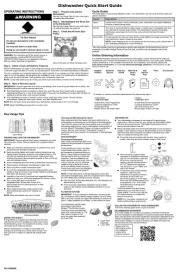
14 Juli 2025
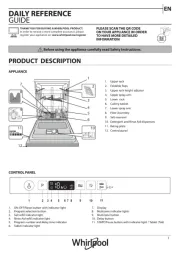
5 Juli 2025
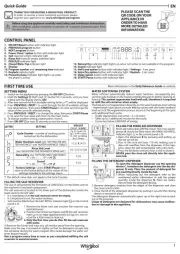
4 Juli 2025
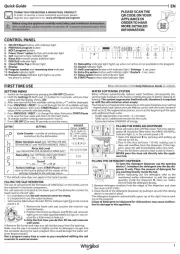
4 Juli 2025
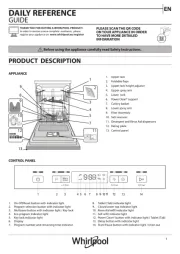
3 Juli 2025
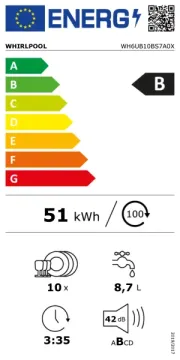
3 Juli 2025
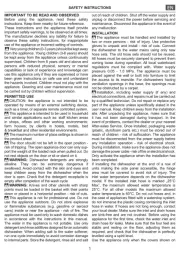
1 Juli 2025
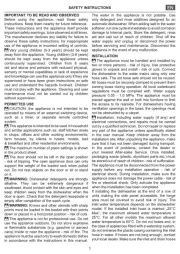
1 Juli 2025
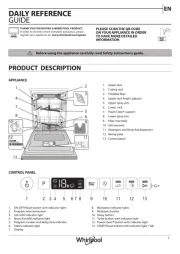
1 Juli 2025
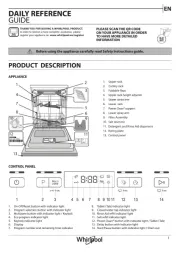
1 Juli 2025
Handleiding Vaatwasser
- Winterhalter
- Klarstein
- Dometic
- Elektra Bregenz
- Ansonic
- Eurotech
- Avanti
- Home Electronics
- Kucht
- Elba
- Exquisit
- Crosley
- Toshiba
- Etna
- Salora
Nieuwste handleidingen voor Vaatwasser

5 Augustus 2025
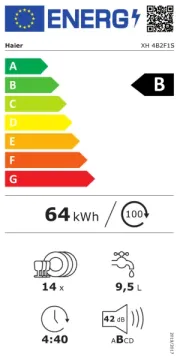
5 Augustus 2025
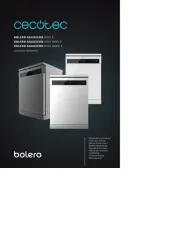
5 Augustus 2025
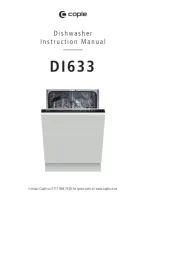
5 Augustus 2025

5 Augustus 2025
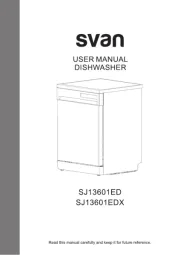
5 Augustus 2025

5 Augustus 2025
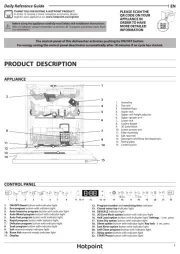
5 Augustus 2025
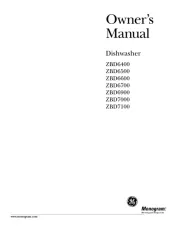
5 Augustus 2025
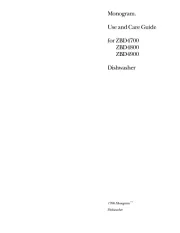
5 Augustus 2025